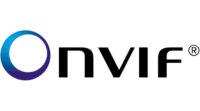ONVIF, a global standardization initiative for IP-based physical security products, has announced the add-on concept, which extends the ONVIF conformance process to individual product features that can solve a specific use case or end user need. This new concept enhances the ability of ONVIF to more quickly respond to the needs of the market with increased interoperability and flexibility of choice for end users and systems integrators.
“The demand for more standardized solutions that can solve a wide variety of use cases is only continuing to grow,” said Leo Levit, chairman of the ONVIF Steering Committee. “As profile development can be a lengthy process, add-ons will allow ONVIF to more quickly offer additional capabilities and functionalities that carry the weight of ONVIF conformance to the market. We look forward to seeing development proposals from members for not only profiles, but also add-ons.”
An ONVIF add-on is one or more features that solve a particular use case; for instance, a need for standardizing file formats when exporting video. To conform to an add-on, a product must also conform to an ONVIF profile. The add-on concept enhances the ONVIF profile model by enabling conformance claims to additional features and capabilities that are not already included in ONVIF profiles.
An ONVIF profile involves a fixed and comprehensive set of features that enable a functional product to be developed solely on the profile specification. While the features included in profiles cannot be changed, add-ons are easily adaptable to evolving technology/specification requirements. Because an add-on supports version handling, it can be updated quickly to adjust for new technology additions or updates.
Extending ONVIF conformance tests to include optional add-ons ensures that an ONVIF conformant device, such as an IP camera, and an ONVIF client, such as a video management system, that conform to an add-on will work together regardless of the manufacturer.
ONVIF offers Profile S for streaming video; Profile G for video recording and storage; Profile C for physical access control; Profile A for broader access control configuration; Profile T for advanced video streaming; Profile M for metadata and events for analytics applications and Profile D for access control peripherals.
Further information about ONVIF conformant products, including member companies and their conformant models, is available on the ONVIF website: www.onvif.org.







